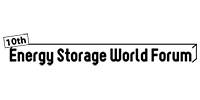 As renewable energy becomes a more prominent participant in grid energy generation, it is clear that the regulatory frameworks in place, in the EU as in the world, are currently unable to adequately address the question of energy storage.
As renewable energy becomes a more prominent participant in grid energy generation, it is clear that the regulatory frameworks in place, in the EU as in the world, are currently unable to adequately address the question of energy storage.
The current framework, which has decades of history with few significant structural changes, was designed when energy storage was negligible compared to generation and transmission — so negligible it was largely ignored.
With large scale energy storage emerging as key to secure, flexible renewable power grids, overhauling these regulations is now a priority. Most significantly, the EU’s 2016 Clean Energy For all Europeans Directive (Winter Package) identifies the significance of energy storage as part of the wider green energy environment and addresses several regulatory challenges.
Defining Energy Storage
One key issue within the regulatory frameworks is that energy storage did not have a clear definition. As a previously negligible component of the energy grid — barring pumped hydro, which would generally be lumped into generation rather than storage —, it was easy to ignore. Now, across the member EU states, there is no consistent treatment of energy storage and even differing definitions of what energy storage means — or no definition at all.
This definition issue causes inconsistency across member states and difficulty in determining when fees and tariffs are applied. For example, energy storage resources can unfairly face double distribution costs for both charging and discharging.
To keep pace with developments in the field, the European Parliament’s committee for industry, research and energy (ITRE) proposed amendments to the Winter Package encouraging a technology neutral definition of energy storage as a “separate asset category”, allowing for developed technologies such as lithium-ion or flow batteries along with new innovations that may emerge. Describing energy storage using its functional characteristics (power, capacity, response time) rather than its technology allows space in the framework for future improvements.
The Winter Package addresses the question of defining energy storage, however, it does not go as far as classifying energy storage as a separate asset category within the energy market.





